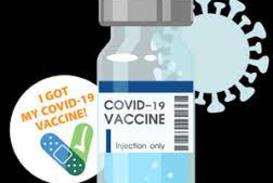Hospitals
COVID-19's Impact In Behavioral Healthcare
It's too early to tell what the lasting effects will be from COVID-19 on the behavioral healthcare sector in 2021 and beyond. As for the present, individuals needing or getting care for chemical dependency and/or psychiatric care likely have an additional burden from the concerns of COVID-19. Data from the National Center for Health Statistics (NCHS) and the U.S. Census Bureau indicated early on that the pandemic had triggered significant and measurable levels of anxiety and depression in numerous houseolds across America.
The Federal government and the Department of Health and Human Services has provided numerous resources to support behavioral health caregivers and patients:
- Centers For Disease Control (CDC) Coronavirus Disease (COVID-19) Stress and Coping
- National Institutes of Health (NIH) National Institute of Mental Health Supporting Mental Health During the COVID-19 Pandemic
- Indian Health Service (IHS): Coronavirus Resources
- Technical Resources, Assistant Center, and Information Exchange (TRACIE) and Novel Coronavirus Resources
The global COVID-19 pandemic has impacted the lives of millions. In the United States, it's difficult to quantify the impact it has had on citizens and their mental health. Some of the contributing elements include:
- Isolation from family members, friends and coworkers
- Detachment from familiar surroundings including schools, places of worship, work facilities, retail shopping, parks, restaurants, gyms, community centers
- Cancellation of routine and special events including religious services, professional and social club or association meetings and conferences, graduations, weddings, parades, neighborhood and community events
- Elimination of numerous forms of entertainment including movie theaters, museums, concerts, music festivals and sports events
- Deterioration of economic vitality at individual, household and national levels
- Significant new opportunities for telehealth technology innovators to advance beyond medical care providers into the behavioral healthcare sector
Behavioral Healthcare Market Sector Overview
The providers in Behavioral Healthcare typically have treatment specialties, three primary categories to consider are:
- Chemical Dependency
- Neurological
- Psychiatric
There are about 14,500 behavioral healthcare providers and the largest 50 organizations control less than 20% of the market in this heavily regulated sector.
Some operate freestanding facilities, others manage networks of providers and in some cases, do both to widen revenue streams. About 40% of substance abuse treatment providers have special care programs for women. A substantial amount of behavioral healthcare is administered via correctional facilities including jails, prisons and step down facilities.
There is significant consolidation underway in the behavioral healthcare sector although at a more conservative rate than other healthcare segments like hospitals, health systems, long term care, assisted living and surgery centers.
Behavioral healthcare is complex as it encompasses young children, adolescents, young adults, adults and seniors. It may involve both physical and psychological aspects of patient care. In psychiatric and substance abuse categories it may span anger management, eating disorders, mood and anxiety, depression, obsessive-compulsive disorder, various drug addictions, chronic pain management, trauma recovery, personality disorders, alcoholism and an array of other conditions and diagnoses. Neurological conditions and disorders are yet another dimension of behavioral patient care with singular and combined elements of care needs.
Healthcare professionals and the organizations they work within must account for these variables. Some care professionals and organizations focus on very specific patient care categories such as chemical dependency while others are equipped to care for a wider variety of behavioral healthcare needs. The care of neurological patients may lean more towards medically-related support; psychiatric and chemical dependency align more with mental health support.
Substance abuse and psychiatric care may or may not require patients to be admitted for care overnight (and perhaps more extended periods of time) and can be successfully treated through other arrangements and programs; these are four basic elements as examples:
Weekly or Biweekly Appointments
- The patient's behavioral care needs are satisfied through meeting with their behavioral care professional one-on-one and / or in a group; a patient's needs may never progress beyond this
Intensive Outpatient Program (IOP)
- As Intensive Outpatient Program (IOP) may be suitable for patients needing a higher level of care than what a weekly or bi weekly appointment provides but not to the level PHP programs serve or could be as a transition or "step down" phase from PHP
Partial Hospitalization Program (PHP)
- PHP is usually voluntary and provides outpatient mental health service for adults with significant psychiatric issues requiring a greater level of care and support as an alternative option to psychiatric hospitalization or an interim phase to help them transition following being discharged from the care of a psychiatric hospital or other extended stay behavioral care facility
Involuntary or Voluntary Psychiatric Hospital Admission
- Patient types, care requirements, facilities, clinician credentials, health insurance and reimbursement become substantially more complex when individuals (children, teens, adults, seniors) are admitted to a psychiatric hospital or other care facility for overnight and longer periods of time which offer higher levels of structure and safety
Formidable Care And Cost Challenges Associated With Chemical Dependency; Alcohol And Drugs
The National Council on Alcoholism and Drug Dependency estimates over 23 million Americans (age 12 and older) are addicted to alcohol or other drugs. The Substance Abuse and Mental Health Services Administration (SAMHSA) estimates that only about 11% (2.5 million) received care at an addiction treatment facility. SAMHSA assesses the market for addiction treatment is about $35 billion per year.The fatality rate from drug overdoses has surpassed the average of 15 per 100,000 in 2014 from nine per 100,000 in 2003. The trend is now close to the HIV epidemic in the late 1980s and early 1990s, according to Robert Anderson, the C.D.C.’s chief of mortality statistics.
Legal Versus Illegal Substances And Substance Abuse Treatment Issues
Largely, the issues stem from abuse of both legal (Schedule 2 / C-2 / prescription drugs) and illegal (Schedule 1 / C-1 / heroin, crystal methamphetamine, etc. non-prescription drugs) substances. While the manufacture, distribution, prescribing and dispensing of C-2 products has always been closely managed and regulated, further measures of control are necessary to address what is generally referred to as the "opioid crisis".
It will involve additional layers of diagnosis and prescribing protocol, categorization of patients, tracking and associated analytics ( both required and voluntary ) across multiple points of care including pharmacy (retail, mailorder, specialty and compounding), physician practice, hospitals, health systems or integrated delivery networks ( IDNs), oncology, surgical centers, ambulatory care clinics, and other patient care venues where pain management therapies are utilized.
The U.S. healthcare supply chain, comprised of domestic and offshore drug manufacturers, supply chain logistics companies, wholesalers, distributors and medical suppliers, are also implementing new voluntary and government-mandated standards involving opioids and other products with higher abuse potential. This spans sourcing, shipping, distribution and sales to healthcare professionals and institutions to guarantee product pedigree and commercial, clinical and legal legitimacy involved with production and transfer of such therapies.
There will be more direct dialogue with behavioral healthcare providers involved with substance abuse recovery to more closely assess patients to determine the origin/method of access patients have with obtaining prescription medication for unauthorized use so solutions can be more quickly identified. These measures will also be reflected in more tightly managing the prescribing of medications like methadone used to help patients wean themselves through the recovery process.
To view a composite list featuring images and descriptions of the top 30 abused prescription and illegal drugs in the United States published by the U.S. Drug Enforcement Agency ( DEA ) please click here.
Neurological Patient Care Disorders, Treatment, Healthcare Insurance Benefits
COVID-19 continues to impede access to care in 2021 for patients with neurological challenges. Neurology is a healthcare sector centered on nervous system disorders. Beginning with the brain and spinal cored, it spans assessment, diagnosis and treatment of all conditions and disease involved with central and peripheral nervous systems, blood vessels, muscular tissue and neural elements such as ears, eyes, ears, skin and other sensory receptors. Neurological issues needing professional care are complex, diverse and frequently costly to treat; they include these and other treatments:
- Autism
- Cerebrovascular disease ( possibly triggered by stroke )
- Demyelinating diseases of the central nervous system ( an example is multiple sclerosis )
- Epilepsy
- Headache disorders ( such as migraines )
- Infections of the brain and / or peripheral nervous system
- Movement disorders ( Parkinson's disease is one of many neurological movement disorders )
- Neurodegenerative disorders ( includes Alzheimer's disease, Amyotrophic Lateral Sclerosis / Lou Gehrig's disease, Parkinson's disease )
- Physical injury ( auto accident, sports, household fall, workplace mishap, etc. )
- Seizure disorders ( epilepsy and other conditions )
- Speech and language disorders
- Spinal cord disorders
Depending on the patient and condition, options to treat neurological conditions may include surgery, medication, physical therapy or a combination of these choices to provide the best possible outcomes. A variety of medical professionals, including neurologists, various other clinicians and therapists could be required plus an assortment of healthcare provider organizations. Medical, behavioral, wellness, pharmacy and other health insurance benefits may come into play individually and collectively.
COVID-19's contagious and damaging characteristics are a very significant threat to neurological patients that require medical procedures, physical therapy and other care that involves regular face-to-face contact with healthcare professionals. A steady ramp up during 2020 of telehealth, remote patient monitoring and other technology driven patient care support will hopefully have an even greater impact for neurological patients in 2021.
Behavioral Healthcare Consumer, Patient and Provider Reimbursement Policies
Reimbursement changes/challenges continue based on diagnosis, facility/institution classification and behavioral, medical and pharmacy benefit coverage guidelines. In November, 2013, regulations to fully implement the Mental Health Parity Act of 2008 were issued. Insurers are now required to cover mental health illnesses to the same degree as physical illnesses. The regulations apply to most health plans presently in the nation plus the new ones marketed as part of healthcare reform.
For behavioral healthcare providers, this helps them administer care, obtain reimbursement and align protocols. For consumers / patients, the removal of pre-existing condition clauses and coverage for evaluations and screenings enhances their ability to get coverage for care and access to some of the medications necessary for behavioral healthcare treatment.
For insurers, it provides guidance in determining benefit designs and plan coverage. The risk management professionals within the insurance and employer segments continue to be challenged with evaluating the additional cost streams associated with wider coverage --while both clinical and financial stakeholders are assessing care and cost variables leading to positive outcomes.
Competitive, Cost, Risk Management And Compliance Challenges
There are numerous regional and metropolitan providers with further defined specialties across the United States as an estimated 1 in 5 Americans experience a behavioral healthcare issue each year. Healthcare provider organizations seek to provide more diverse types of care to support more patients and better compete against each other. However; behavioral healthcare provider organizations are often still challenged with their finances when it comes to being fully reimbursed for the wide array of care services their patients receive.
These concerns compound themselves as additional care measures are made part of standard treatment plans and programs. This issue is receiving more attention as the importance of behavioral healthcare and mental wellness gains greater recognition from both commercial and government payers. The ongoing changes in behavioral healthcare insurance is also a competitive challenge as plans seek to enhance their overall benefit offerings.
Telehealth Technology In Behavioral Healthcare Is Demonstrating A Strong Performance
Telehealth is the emerging star in behavioral health. It is proving to be a valuable resource in providing convenient and effective care especially for those cases in which patients are in remote locations, have busy schedules or have limited means of travel. The reimbursement standards of commercial and government payers must be thoroughly established and rewarding enough so clinicians, provider organizations and telehealth enterprises providing behavioral care continue to support patients and have funding to further improve their capabilities.
Pharmaceutical Innovations Spanning Behavioral Healthcare Needs Continues
For pharmaceutical marketers, the behavioral healthcare marketplace has been a growing opportunity for clinical and commercial development. Therapies used in this sector once only familiar to clinicians, their patients and the pharmacists dispensing their prescriptions, have become as familiar as some consumer brands. New product launches are challenged with the obstacle of COVID-19 preventing much of the personal interactions between sales teams and behavioral healthcare professionals beyond webinars and Zoom meetings.
Numerous Oral And Injectable Behavioral Therapies Span These And Other Indications:
- Anti-anxiety
- Antidepressants
- Anti-psychotics
- Cognitive enhancers
- Mood stabilizers
- Sleep agents
- Substance abuse recovery
- Stimulants
Early On, These Five Behavioral Health Therapies Benefited By Effective Promotion To Clinicians As Well As Consumer / Patient Word-Of-Mouth Notoriety:
- 1963: Valium ( diazepam ) was introduced by Hoffman-La Roche as an improved formulation of Librium
- 1981: Xanax ( alprazolam ) by Upjohn
- 1987: Prozac ( fluoxetine ) by Eli Lilly
- 1992: Zoloft ( sertraline ) by Pfizer
- 1996: Adderall ( dextroamphetamine and levoamphetamine ) by Shire
Food and Drug Administration Policy Changes Widened Promotional Opportunities And Information Sharing
Behavioral healthcare needs and issues became even more openly discussed between family members, friends, coworkers and clinicians as the FDA made two significant changes in their prescription drug advertising and marketing policies regarding direct-to-consumer advertising ( DTC ). These impacted not only behavioral healthcare products but a wide array of pharmaceutical products depending upon brand and product marketing strategy and budgets:
- 1985: Consumer print advertisements featuring prescription drugs was permitted
- 1997: Consumer television advertisements featuring prescription drugs was permitted
Clinical And Cost Market Access Strategy Value Propositions For Pharmaceutical Manufacturers
Digital venues offer more options for promotion and information sharing. Regardless of brand recognition and promotional messaging, pharmaceutical manufacturers need to have a robust market access strategy that deploys data supported clinical and economic value propositions. It is essential to engage prescribers and payers including the medical and pharmacy directors of PBMs, MCOs, government-sponsored health plans as well as employer medical directors and employee benefit consultants.
Contracting strategies need to anticipate the variables of formulary tiers, brand and generic competitors as well as clinical/cost decision drivers of MCO and PBM decision makers and their client or partner stakeholders. Behavioral healthcare medications are prescribed by a variety of clinicians, both medical and psychiatric, which need to be part of the care and cost formulas in value propositions that require deep data support. Successful patient outcomes are determined based on patient wellness and the clinical and economic outlays necessary to achieve it.
... This profile of the Behavioral Healthcare sector spans Psychiatric, Neurological and Substance Abuse patient care and includes lists of the leading Psychiatric Hospitals, Substance Abuse Treatment Centers and Behavioral Healthcare Associations ...
... A list of Behavioral Health Providers, Substance Abuse Treatment Centers and Resources ...
... A list of the largest Behavioral Health hospitals ...
Healthcare Medical Pharmaceutical Directory.com
BEHAVIORAL HEALTHCARE
Business Trends...
- Behavioral healthcare sees the pandemic continuing to drive new opportunities for telehealth in 2021
- Marketing strategy needs to account for assertive merger and acquisition consolidation throughout behavioral Healthcare as public recognition, insurance coverage and treatment options spanning counseling and pharmaceutical strategies improve
- Scroll down to learn more about the commercial trends in behavioral healthcare and notable providers in the sector
... A list of the top Behavioral Health associations ...
...A healthcare industry business intelligence resource with marketing strategy insights for pharmaceutical and medical device manufacturers, healthcare provider organizations, medical software and technology enterprises, patient care service companies and management consulting firms spanning a global community of users from 50+ nations...


